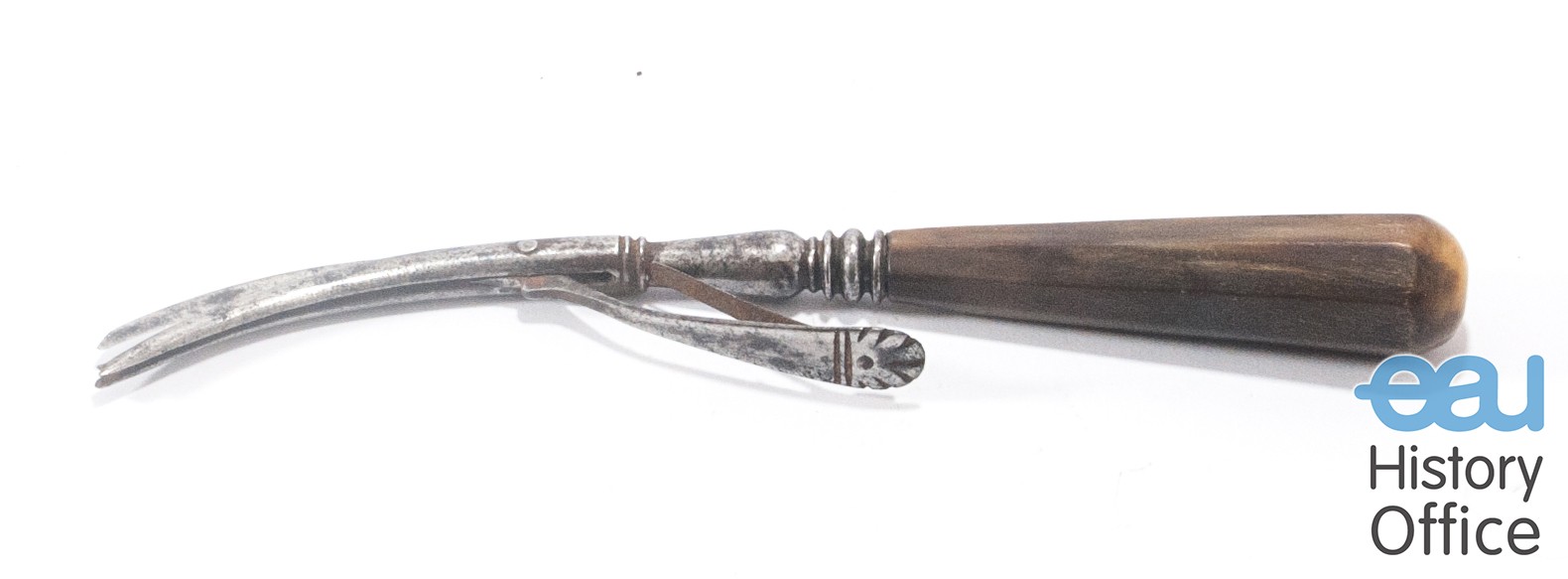Jacques Beaulieu’s (1651-1714) method of cutting the stone can be considered the connecting link between the apparatus major and the 19th century lateral lithotomy.

Lithotome caché after Frère Côme. Int. Nitze-Leiter Research Society for Endoscopy, Vienna/Reuter Collection.
Lithotomy acquired the semblance of a scientific procedure in the hands of the English surgeon William Cheselden (1688-1752). Cheselden’s lateral lithotomy went through three stages of development:
- incision into the bladder behind the prostate
- extension of an incision through the membraneous urethra into the prostate;
- an operation in which a curved bistoury was introduced above the prostate. Cheselden then pulled the knife toward himself, cutting boldly into the prostate.
In the course of the 18th century the method of lateral lithotomy was most commonly used in Europe. The operation was subject to ambitious discussion and debate on variations of the method primarily regarding the site of the incision and the instruments used.

Lithotome caché. Int. Nitze-Leiter Research Society for Endoscopy, Vienna/Reuter Collection.

